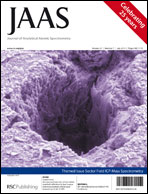The aim of our research was to compare δ11B measurements performed with thermal ionization mass spectrometry (TIMS) and sector field-inductively coupled plasma-mass spectrometry (SF-ICP-MS) and evaluate the feasibility of implementing stable isotope methods in European water framework directive (WFD) monitoring programs. The comparison was based on δ11B measurements of 192 ground- and surface water samples and 15 leachates of nitrate pollution source materials (organic and mineral fertilisers). The precision of δ11B measurements attainable with SF-ICP-MS, 2σ= ± 2.6‰; (n = 192), is as expected lower than the precision achieved by TIMS, 2σ= ± 0.3‰ (n = 183). However the ease of use, rapidity and availability of SF-ICP-MS on one hand and the observed variability in δ11B in ground- and surface water on the other (from −3.4 to +37‰), demonstrates that using SF-ICP-MS as an isotopic screening method would promote the use of isotopic methodology for WFD monitoring. Based on the results of the different case studies it is shown that retrieving precise information on the identification of pollution sources from δ11B values requires reaching the best analytical precision and accuracy possible. Hence, the superior precision of TIMS advantages tracing of nitrate pollution sources. However for some cases, e.g. trying to decipher contributions between sources with really distinct δ11B signatures (e.g. manure and sewage effluent), SF-ICP-MS results lead to the same conclusions and can therefore be used as a first approachable screening method for the determination of δ11B in WFD monitoring programs.

You have access to this article
 Please wait while we load your content...
Something went wrong. Try again?
Please wait while we load your content...
Something went wrong. Try again?


 Please wait while we load your content...
Please wait while we load your content...